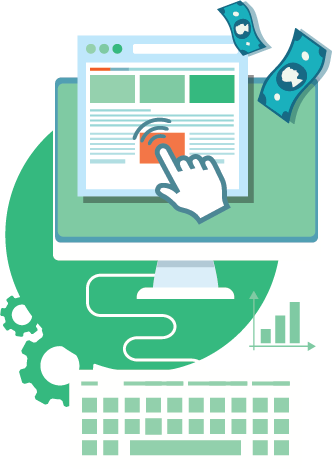
By: Tim Waldenback, co-founder Zutobi | Last updated April, 2022
Apps are everywhere. Many businesses have them, consumers expect them, and more and more businesses are creating them.
Apps are a great business opportunity, but also come with stiff competition. Making an app isn’t enough -- you also have to market it effectively and ensure it offers a top-notch user experience.
On top of these challenges, even small changes in an app’s user experience can have a detrimental impact on conversion and engagement rates.
So it’s best to test your features with A/B testing.
In this comprehensive article, you'll learn everything you need to know about A/B testing apps to get appealing results.
When most people think of A/B testing, they imagine testing websites, webpages, or landing pages.
A/B testing for mobile apps is really no different. It involves testing individual variables and seeing how the audience responds to these variables.
The audience may comprise a single cohort or multiple, segmented audiences, but the goal is the same: to identify which option provides the best user experience.
For example, say you want to test your app for your driver’s permit practice test among teens in New Jersey.
Let's imagine your goal is to drive more app downloads, so you start A/B testing to see which variables entice users to download.
You may start with the icon displayed in the store to determine if one gets more attention and leads to more download. Everything else stays the same.
Once you have results for this test, you may move onto testing keywords, the product title, description, screenshots, and more.
A/B testing is a technique used by many app creators because it provides valuable, verifiable results.
With testing, and the subsequent result, you’re no longer relying on assumptions. Instead, you have concrete data to inform your decisions.
There are several other benefits of A/B testing apps, including:
The benefit of each example goes back to data.
You're no longer basing decisions on assumptions, personal preferences, or bias. Rather, you know exactly what works and have the numbers to prove it.
Most mobile apps are tested using two different types of A/B testing.
This method is primarily used by developers and tests the UX and UI impact, including retention rate, engagement, session time, and lifetime value. You may want to add other metrics to test for specific functions.
For marketing, A/B testing can optimize conversion rates, retarget users, and drive downloads. You can test which creative ad is more effective, down to the call-to-action, font, images, and every other granular detail.
For example, this GuessTheTest case study tested the optimal app thumbnail image while this study looked at the best CTA button format.
One of the best aspects of A/B testing is that it’s repeatable and scalable. You can use it to continuously optimize your app and its marketing campaigns. Here’s how:
Your testing should always have a hypothesis that you’re trying to prove or disprove. Clearly stating a hypothesis is how you know which variables to test.
For example, you may want to test whether having screenshots of your practice permit test inspires more people to download your app. Testing the number of screenshots in the app page of the store gives you a starting point, orienting you to know where to begin.
You should also create a checklist to ensure you cover all the information you need, including:
If you can’t come up with a defined testing variable, begin with the problem for which you’re seeking a solution. Then investigate what testing approach can help you best solve the problem.
Once you know what to test, you need to segment and define the audiences on which you’re testing.
Ideally, in A/B testing, you should isolate one variable to test at a time against one audience cohort.
The reason why is because testing across different audiences, or diverse audiences, adds another variable to the mix which makes it more difficult to accurately define what worked and what didn’t.
It's also valuable to segment your audience by factors like traffic source or new versus returning visitors.
However, when segmenting your audience, it's important the sample size is large enough to glean important insights. If the sample size is too small, your A/B test data won't be valid, and you’ll miss out on part of the big picture.
Now is the time to analyze your results and determine which variable offers better results. Consider all the available data to get a comprehensive picture. For example, if you notice that your change increased session time, rather than conversions as you hoped, that’s still a valuable learning.
You’ve determined your best results from each valuable, so now you know that you can use that winning variable and implement it across your entire audience. If you didn’t get clear results from A/B testing, you should still have data that you can use to inform your next test.
A/B testing is repeatable, so you can keep refining and testing until you get optimal results. It’s important to continue testing regularly, no matter what, and use the information to improve your app and user experience.
You always need to understand why you’re testing a variable with a clear hypothesis and how you will move forward once you have an outcome. This statement may seem obvious, but knowing why you’re testing ensures that you’re not wasting time and money on a test that won’t serve your larger goals.
A/B tests have a lot of value. Even if things don’t go the way you hoped or you get results earlier than expected, it’s important to stick with your tests long enough to be confident in your decisions.
Don’t get too invested in the result you hope to get. User behavior is anything but simple, and sometimes your testing will show you something unexpected. You need to stay open-minded and implement the necessary changes, then test again. Testing is an iterative process towards continual optimization.
Ideally, with A/B testing, you're only changing only one variable at a time, but you can’t control everything. The season in which you test matters, and you can’t control that. So, be sure to test the same variables in different seasons to see what results you get.
A/B testing is essential to ensuring your app delivers the best possible experience for users and validates your assumptions and ideas. Include A/B testing in your app development and updates to keep users downloading and engaging with your app.

A primer explaining the 4 different types of tests you can run, what they mean, and how you can use each to improve your competitive testing advantage.
One of the most debated testing topics is how large does my sample size need to be to get trustworthy test results? Some argue samples of more than 120,000 visitors per variant are needed to begin to see trustworthy test results. Ishan Goel of VWO disagrees. What does he think is needed to get trustworthy test results? Listen to this webinar recording to find out.
To get users clicking your content, which format works best: buttons or links. A series of 8 real-life A/B tests suggests one format consistently outperforms. Can you guess which version wins? Checkout the mini meta analysis to find out.













